
Global biodiversity is in decline. Apart from all the major culprits of this decline, the way we want our gardens to look is also contributing. So even when this is just a small share, why not attract wildlife to our garden to help biodiversity?
In narrow-occupied areas in the Netherlands and Spain, and probably in other countries as well, the owners tile their small stamp of a garden with ceramic tiles or even concrete slabs. There will certainly be insects and birds in such a bare area from time to time. However, they will be gone in no time.
An additional problem of such a covering is that the entire water management gets out of balance. The soil can no longer breathe, due to lack of contact with the air, and dies.
We can do better than that, can’t we?
Related: Global Biodiversity Dictates the Quality of Our Life
Some of the links are affiliate links. As an affiliate associate, we earn a commission when you purchase any of the products offered through the shared links at no extra cost for you. This helps us maintain this website.
Table of contents
What is already in the garden?
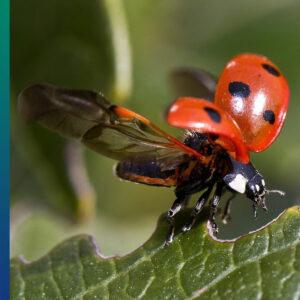
When we moved to our current home a few years ago, we left the garden as it was for a year to first make an inventory of which plants were in it and how they behaved.
Very soon we discovered most plants were abundant with flowers. Yet, no bee was ever visiting! The flowers had no scent. And seeing how the neighbors treat their garden we suspect that herbicides and other poisons were used in ours as well.
Ladybugs are a sign the garden is healthy. The only one we saw on our terrace was a dead one. After removing the scentless flowers and replanting the garden with native plants, herbs, and vegetables, the bees have found their way to our garden again. I hope that given time the ladybugs will show up eventually as well.
Inventory of the wildlife
The first step was to wait for what kind of plants there were. The second step is to see which animals visit our garden. There are already more than I expected.
Insects
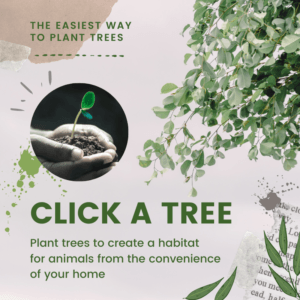
- Caterpillars. As you can understand we don’t always like caterpillars, especially not in the kitchen garden. But if we want butterflies, then the caterpillars are part of the deal;
- Butterflies;
- Spiders. Big cleaners although we would rather have them outside than inside because of the spider poop;
- Dragonflies. Orange and black ones;
- Wasps;
- Bees;
- Bumblebees. These are huge;
- Beetles;
- Ants;
- Crane Flies;
- Cockroaches. We’re not big fans of those. Lots of them live in the sewerage, which the municipality occasionally injects with poison. Their signal to crawl out and enter either our garden or the house;
- Mosquitoes;
- Flies;
- Grasshoppers.
Invertebrates
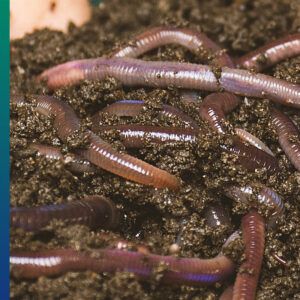
- Worms. Our area is fairly dry but we keep the compost pile wet and worms love that;
- Snails.
Reptiles
- Lizards;
- Geckos.
Birds
- Pigeons. I must admit Tom hates them because they distract him all day long with their cooing;
- Sparrows;
- Blackbirds;
- Several kinds we don’t know yet by name.
Mammals
- Squirrels. They make a mess of the garden with their pine cone meals, yet they are so much fun to watch when they are playing;
- Cats. Not exactly wildlife nor the animals we want in our garden but they do anyway.
In the neighborhood
The backyard is adjacent to a small forest of about 3 hectares where there are some species that we hardly find in the garden. Although the bats fly around a lot when the neighboring lights are out. A friend encountered a scorpion once, which I hope to avoid!

- Bats;
- Hedgehogs;
- Cuckoos;
- Hoopoes;
- Magpies;
- (Crested) Starlings;
- Rats;
- Mice;
- Foxes;
- Wild boars;
- Little Snakes;
- Processionary Caterpillars.
Some animals we’d rather not see in the garden, of course. The blackbirds and cats ruin the kitchen garden as do the snails, caterpillars, and grasshoppers. It goes without saying that we don’t fight them with poison. Companion planting and natural repellants like garlic, soap, and nets do quite well. Cats don’t like lemon geraniums and marigolds, neither do mosquitos.
Related: Organic Companion Planting for a Healthy Kitchen Garden
How to attract wildlife to our garden
The best thing about those animals is that you learn so much from nature when you observe them. It’s so much fun watching the birds while they are nesting (OK, if the blackbirds have turned our organic seedlings upside down again, we don’t like it as much, LOL).
The following is a list of what we can do in the garden to attract wildlife.
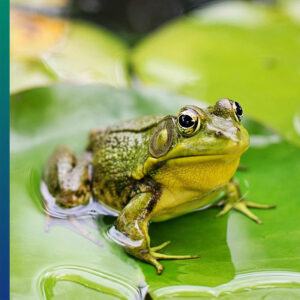
- Hang birdhouses or nest boxes on a wall or in a tree. Make sure the cats cannot reach it;
- Make a bird table and a bath. If your winters are cold or snowy the birds would love seeds, apples, fat balls, and other food as help to get through the season;
- Plant hedges;
- Create gaps in the fence for little animals to have a bigger habitat;
- Build a shelter for hedgehogs. Most of the animal shelters and hotels can also be bought at a garden center;
- Grow climbing plants;
- The grass is allowed to elongate so that daisies grow in it;
- Not all weeds are bad, let them grow;
- Have a pond to attract amphibians. It doesn’t have to be big. A bucket or plant pot without a bottom hole does wonders as well. Dig in the pot so that it has a small rim protruding above the ground.
Put a couple of large rocks inside as a support for frogs and other amphibians and fill the pot with water. Plant some water plants; - Create an insect hotel. The inside of bamboo sticks need to be smooth, otherwise, the wings of the bees will get damaged;
- Make an organic compost pile;
- Grow native plants and wildflowers. Collect seeds during hikes in nature or buy wildflower seed mixes;
- Leave the prunings and dead branches. These act as a great bug hotel;
- Hang bat boxes on a wall;
- Plant trees;
- Attract little animals on the ground with nuts, seeds, and water. Don’t feed them prepared food like bread or left-overs from meals. It’s better not to attract rats and ‘human’ food is not good for animals;
- And the really diverting part: observe, learn and take pictures.
Related: How to Start Organic Composting at Home Immediately
Promoting biodiversity
It will take some time before our garden is to our liking. We need patience and perseverance and I will be especially happy when the ladybugs show up again. Not only because they are an excellent natural lice killer, but also because they are beautiful. Like many insects are.
I also hope that eventually, our neighbors will stop ruining their, and sometimes our, garden with pesticides.
Do you have a lot of wildlife in your garden? Tell us in the comment box below.

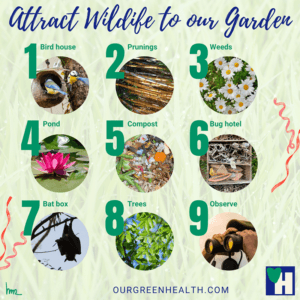
Hi I really enjoyed the page and information on it. It peaked my interest because my wife and I are in the process of growing our own garden starting with putting the seeds in the pallets and growing them from there. The biodome information regarding why some don’t work was very interesting. I really liked the information in regards to seeing the lady bugs and other insects and the health of your garden. Great job keep it up.
I am glad you liked the info, Martin, and I hope it helps you with your endeavors in the garden. I am not sure what you mean by pallets? Do you mean those wooden little platforms they use in the industry? And do you use them as a kind of greenhouse? It sounds lovely if that is the case!
Depending on where you live, it is a good method for germinating and growing seeds. When we were living in the Netherlands I used that method. For some reason, the results over here in Spain were not that good. Now that I immediately sow them in the soil, the result is better.
Thanks for your comment and take care.
Thank you so much for this wonderful article. I loved it, especially how to build a hedgehog house. We have several hedgehogs in our 5000 M2 Garten, and now we can build some houses for them. We have a purely organic garden. We don’t use poison or another insecticide in the garden. That’s why we have a lot of wildlife, deer, many species of birds, wild bees, bumblebee wasps, a couple of pheasants, rabbits – everything you can think of. We let 1/3 of our garden wild so that animals and insects have their own protection zone.
Monique
Marvelous, Monique, it seems that you are further on the sustainable way than we are. Great! And such a lot of neat animals you have in the garden. Our garden is much smaller (800 m2). That’s why the neighbors have such a huge impact on our soil, unfortunately.
Who knows, in time they will follow our example. I will also be glad if the artificial plants of the previous owners are all gone. It’s so strange to want flowers in your garden that don’t smell, don’t you think? The growers of these have strange ideas to grow flowers exclusively on appearance.
Thanks for being an example and for your reaction. 🙂
What an interesting article!
Here in the UK we don’t have much larger mammals which I’m not entirely sure if it’s a good thing or not but anyways at the moment our garden is too human friendly, that’s how my family prefer it. However I’m always dreaming of adding many items to help the environment as well as attract wildlife. I would also love to grow trees!
So basically at the moment the garden isn’t even being visited by a bee forget the rest of the wildlife, which is quite upsetting to say the least.
What a pity your family has such different opinions from you, Sariyah. It seems difficult to me to deal with that properly? Can’t you even put a pot with some herbs in the garden? Lavender smells lovely is easy to grow in a pot.
Maybe you can put some herbs in a pot in your own room if you have one. In this article, I describe the how and what: Grow your Own Herbs Indoors or Outside for Quality Herbal Tea. It’s very rewarding.
As for trees, it is very easy for some species to just put a branch in the ground. Over time, roots will emerge and once they do, the leaves will follow. I hope you will succeed.
Thanks for your comment.
Hi Hannie, I enjoyed so much reading this article. When I was a child, we lived in a country house and had most of this wildlife in our garden that you recommended here. Now, I don’t have a garden, but I have flowers and herbs on my balcony. I didn’t know that the presence of ladybugs and bees show that I have a healthy environment on my balcony. Even, I don’t have a large place, I have seen a lot of this category of wildlife on my balcony. Now, that I read your article, I am happy about that.
Thank you for sharing it.
Alketa
Yes, you’re right to be happy, Alketa, well done. It’s great that you can have such a result in a small place, don’t you think? What kind of herbs do you grow on your balcony and do you use those in your meals as well?
Our mint looked like it was dead, but after a few rain showers, it’s flourishing again. I love making tea from it. Last summer I could cut twigs from it all summer for the tea. It seemed endless. Plants are so wonderful and especially if as a bonus they attract wildlife to our garden as well. 🙂
Thanks for your reaction and take care.